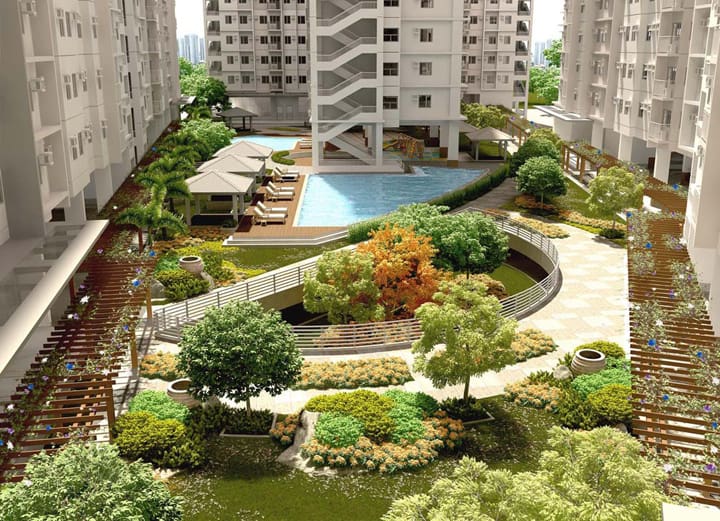
Future-proofing is the future of the country’s property sector.
With the effects of climate change manifested by more frequent and stronger typhoons and heat waves, as well as the pandemic which underscored the need for more and widely distributed public open space and easily accessible sources of essential services and goods, I expect the real estate industry to respond to this “new normal,” Philippine Institute of Environmental Planners (PIEP) Past President Nathaniel von Einsiedel told the BusinessMirror. As a result, green architecture and green infrastructure will become more popular, according to Einsiedel.

To help local government units affected by the Supertyphoon Odette towards recovery, Einsiedel is mobilizing the United Architects of the Philippines (UAP), Philippine Association of Landscape Architects (PALA), and the Philippine Institute of Civil Engineers (PICE) to formulate their reconstruction measures. Earlier, he also recommended to the government on the aftermath of Supertyphoon Yolanda to assist disaster-prone LGUs develop their own post-disaster recovery and reconstruction plan to enable them to implement the plans immediately after the disaster hits, with a little bit of tweaking to respond to the specific findings of their Post-Disaster Needs Assessment (PDNA). “I am now reviving this recommendation even as recovery activities have already started in several places. It may be late but it’s better late than never. Besides, most of the affected LGUs are still in the relief operations phase,” he explained.
The SMDC way
SMDC President Jose Mari Banzon also told the BusinessMirror the pandemic gave SMDC the chance to tweak around the unprecedented changes to stay afloat. Further, it was also a window to serve the community better through thoughtful planning and designs.
“By keying in on people’s evolving needs, SMDC is considerate of the times, continuing to adapt to deliver comfort and convenience through their properties,” Banzon said.
Development of open spaces is vital for SMDC. Although allotted spaces vary for each development, SMDC usually dedicates 40 to 60 percent to open spaces. Through the open spaces, the residents are able to pursue their health and wellness activities. Moreover, Banzon said SMDC ensured that these open spaces are big enough to contain lounge decks, manicured gardens, pools, and gardens.
“In matters of human mobility, SMDC does not compromise. It makes sure that residents can have a calm and relaxing atmosphere in the place they call home, regardless of whether they are in the city or in the countryside,” Banzon said.
Banzon recalled that SMDC quickly revisited their design plans and adjusted these according to the changed needs brought about by the pandemic. He noted existing SMDC properties promptly adapted services like an automated property management system for the communities, as a result of continuing consultations among the stakeholders of SMDC.
A major part of SMDC’s future-proofing road map is implementing human-centered designs aligned with the vision of the company.
Banzon said SMDC continues to conduct research and consultation to lead them in innovating and developing human-centered designs aligned with the vision of SMDC.
In response to the new normal, SMDC also factored the costs and design in their future-proofing road map. “Costs are expected to be much higher considering its design as SMDC reevaluates its projects to further serve our people better, as we future-proof our developments align with the needs of the community and the calls for sustainability,” Banzon said.
Future-proofing Pampanga
As far as the future-proofing of the Pampanga Megalopolis is concerned, construction of the buildings will be in accordance with the present condition of the site and in consideration of the natural environment. The plan aims to create buildings that have minimal impact on human health and the natural environment.
Pampanga Megalopolis refers to the former president Gloria Arroyo’s vision to develop the 19 municipalities and three cities in Pampanga into the next center of growth in Luzon as a way of decongesting Metro Manila and providing the people with a cleaner and more progressive environment.
She said Pampanga Megalopolis should embrace green urbanism to reduce carbon footprints in communities and destinations by making them more walkable and bikeable. “It ensures that the community achieves a balanced lifestyle where there is work, play, living, and worship,” she said in a statement.
The project initially starts with the Pampanga Golden Triangle which consists of Angeles City, San Fernando City, Mabalacat City, Porac, Lubao, Floridablanca, and Guagua. The triangle also covers Clark Freeport Zone and Clark International Airport. Urban planner Felino Palafox Jr will draft the development of the Pampanga Golden Triangle.
If you like this article, share it on social media by clicking any of the icons below.
Or in case you haven’t subscribed yet to our newsletter, please click SUBSCRIBE so you won’t miss the daily real estate news updates delivered right to your Inbox.
The article was originally published in Business Mirror and written by Rizal Raoul Reyes.







More Stories
Vista Land Celebrates 50 Years with Sandiwa: An Event Honoring Leadership, Legacy, and the Filipino Dream of Homeownership
Vista Land Celebrates Love Month in Ilocos Region
Vista Land Bridges Cebuano Heritage and Progress with Valencia by Vista Estates